Ijraset Journal For Research in Applied Science and Engineering Technology
- Home / Ijraset
- On This Page
- Abstract
- Introduction
- Conclusion
- Copyright
Impact of Calcium Aluminate Based Cement and Ceramic Waste Aggregate on the Strength Aspect of Concrete
Authors: Gulnaz Akthar, Ashish Kumar
DOI Link: https://doi.org/10.22214/ijraset.2024.64161
Certificate: View Certificate
Abstract
A new race of development has been launched as quickly as possible in many countries and nations in this modern globe and era of development, but it has been noted that all of them are encountering a variety of issues in reaching their objective. Their development has been reported to be hindered by a lack of resources, and among the issues they encounter are the absence and scarcity of a variety of high-quality, environmentally friendly building materials. The lack of building materials is one of the main issues that these developing countries are dealing with. This review paper goes into great detail about the issue at hand and makes some recommendations based on a number of earlier research findings.
Introduction
I. INTRODUCTION
A. Calcium Aluminate
A special type of substance known as calcium aluminate is essentially created when calcium and alumina are both oxidized together. The calcium aluminate is created when alumina and calcium are joined to undergo simultaneous oxidation, resulting in the formation of several calcium aluminates compounds. This calcium aluminate is rich in cementitious properties and can be used as a fine aggregate substitute without further processing or as an auxiliary to regular Portland cement with the right preparation. This review article delves deeply into a number of studies pertaining to the application of calcium aluminate, drawing various conclusions from the utilization.
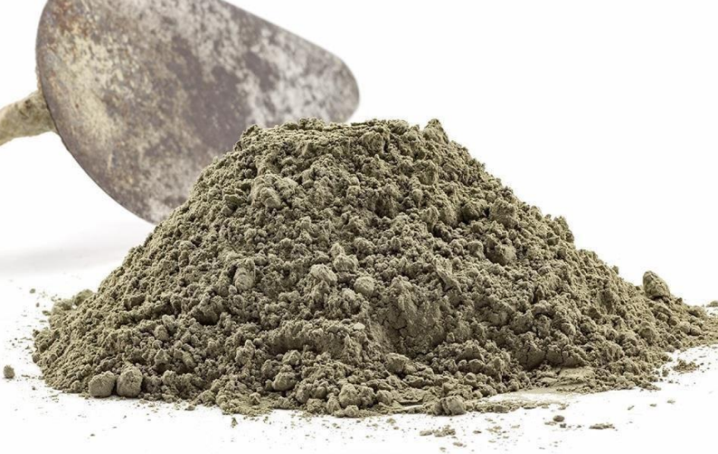
Figure1. 1 Calcium Aluminate
B. Ceramic Waste
In essence, ceramic trash is waste that is produced by the ceramic industry itself as well as waste that is left behind after many previously built structures are demolished. According to the research trends report, there is a significant amount of waste produced by the earthenware industry. This is because most ceramic tiles are damaged during the cutting, tiling, and tile transportation processes, which leaves them unsatisfactory for the user and results in waste for the producer, manufacturer, user, and transporter. As a result, there is a significant amount of dumping that occurs nowadays. Dumping is neither environmentally or ecologically sustainable. Several scholars have observed this dumping and provided alternatives. The option was to use this trash mostly in the construction industry as a standby for natural acceptable and coarse aggregates. In this review article, several research works relating to the practice of using ceramic leftover as a spare of the regular fines and the typical coarse aggregate are briefly discussed in this paper.
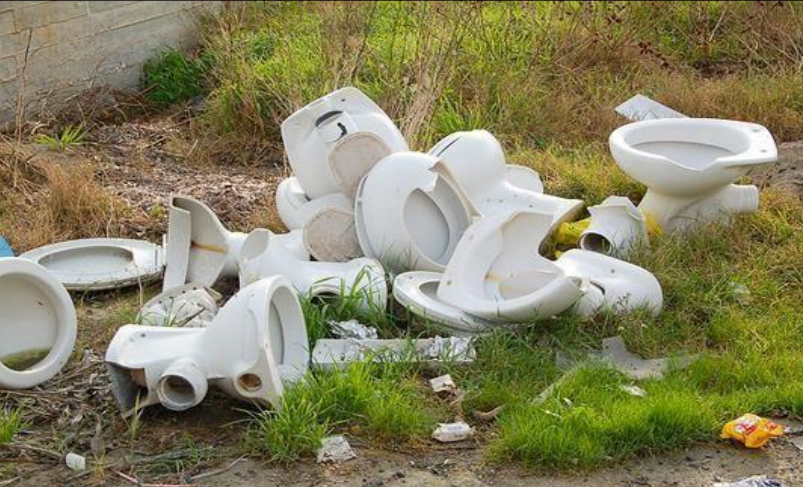
Figure1. 2 Ceramic waste
II. LITERATURE REVIEW
A. Literature Review on Calcium Aluminate
- (Abolhasani, Nazarpour et al. 2021) In this concrete related research work calcium aluminate cement and rice husk ash are used for the modification of the concrete. Calcium aluminate-based cement was castoff as standby for the OPC while the rice husk ash was used in place of calcium aluminate-based adhesive. Calcium aluminate-based adhesive was first used at two different %ages of 50 % and 100 % in place of ordinary Portland cement and then rice husk ash was used in place of calcium aluminate-based cement at 2.5 %, 5 % and 7.5 %. Both the material that is the calcium aluminate-based cement and the rice husk ash are used in combined form as well as separate form. Then reliant upon the %age of the calcium aluminate adhesive and the %age of the rice husk ash numerous concrete samples are made and then tested for three-point loading test and 4-point loading test. The examination grades of the usage of calcium aluminate-based cement exposed that the maximum value of the flexural asset was attained at 100 % practice of the calcium aluminate-based cement when used as replacement material for cement. The test also showed that while usage of calcium aluminate-based cement with rice husk ash maximum flexural asset was attained at 5 % convention of the rice husk ash and 95 % convention of the calcium aluminate cement. Then this combination was tested for 2 diverse liquid binder proportions of 0.40 and 0.50 and it was found that the thoroughgoing asset was observed at 0.40 water to binder ratio.
- (El-Amir, Amin et al. 2021) In this research work Celestine and alumina are used together for the preparation and testing of different types of calcium aluminate-based cement depending upon the %age of the Celestine and alumina. Basically, these research works pacts with the preparation of new kind of calcium alumina adhesive with the treatment of Celestine and alumina under controlled environment. Overall, 4 combinations are made and that are as follows, first containing 70 % Celestine and 30 % alumina, second containing 60 % Celestine and 40 % alumina, third containing 50 % Celestine and 50 % alumina and fourth containing 40 % Celestine and 60 % alumina. Then depending upon the %age of Celestine and %age of the alumina several mixes are prepared and then treated under controlled temperature conditions. Then total 4 different kinds of cements are observed and then these all 4 are verified for mainly compressive strength examination of the cement. The second most optimum results are attained at 60 % convention of the Celestine and 40 % usage of the alumina
- (Moudio, Tchakouté et al. 2021) In this investigate effort calcium aluminate, calcium silicate, calcium alumina-silicate and metakaoline are used for the modification of the concrete. Calcium aluminate was formed using calcium and alumina, calcium silicate was formed using calcium and silica, calcium alumina-silicate was formed using calcium, alumina and silica. All these materials are used alone as well as in mixture with one another so as to square the consequence of their practice over the frequent strengths of the normal concrete. In this effort 3 diverse classes of adhesives are first prepared that includes calcium aluminate adhesive, calcium silicate adhesive and calcium alumina silicate adhesive and then are tested by the inclusion of metakaoline in them. Metakaoline was used at 0 %, 5 %, 10 %, 15 % and 20 % in case of calcium aluminate cement and calcium silicate cement, while metakaoline was used at 0 %, 10 % and 20 % in case of calcium alumina-silicate cement. Then contingent over the %age of calcium aluminate adhesive, %age of metakaoline, %age of calcium silicate and %age of calcium alumina-silicate several mixes are equipped and then verified for tensile forte and flexural forte. The examination results of tensile strength assessment showed that, in first case maximum results are gotten at 15 % practice of the metakaoline and 85 % convention of the calcium aluminate cement, in second case maximum results are obtained at 15 % usage of the metakaoline and 85 % practice of the calcium silicate cement and in third case maximum results are attained at 20 % practice of the metakaoline and 80 % practice of the calcium alumina-silicate cement. The test results of the flexural forte assessment are similar and it was originate that, in first case extreme results are attained at 15 % practice of the metakaoline and 85 % practice of the calcium aluminate cement, in second case maximum results are obtained at 15 % practice of the metakaoline and 85 % usage of the calcium silicate cement and in third case maximum results are attained at 20 % practice of the metakaoline and 80 % usage of the calcium alumina-silicate cement.
- (Beroll, Schmalzl et al. 2020) In this examination exertion carbon fibre and calcium aluminate cement are cast-off together for the metier enhancement of the regular tangible. Calcium aluminate was used in place of normal cement and the carbon fibre was used as an additive in the concrete. Single kind of calcium aluminate cement was used, while different kinds of carbon fibres are used depending upon the size of the carbon fibre, depending upon the shape of carbon fibre and depending upon the length of the carbon fibre. Firstly, calcium aluminate cement was tested properly for its bodily possessions and organic magnitudes and then carbon fibre was tested for its substantial aspects. Calcium aluminate was rummage-sale at 2 %ages of 0 % and 100 % as replacement material for cement and the carbon fibre was used at 7 different %ages of 0 %, 0.5 %, 1 %, 1.5 %, 2 %, 2.5 % and 3 %. The size of the carbon fibre was found to be 2.5 mm and the young modulus was found to be 230 GPa. The density of the carbon fibre was found to be 1.7 and the tensile strength was found to be 305 GPa. Then depending upon the %age of the calcium aluminate adhesive and the %age of the carbon fibre, numerous tangible mixes are organized and then contingent over several mix, numerous cubes are casted. Then all these specimens are tested for tensile forte assessment and flexural forte assessment. The examination consequences of tensile forte assessment showed that the thoroughgoing strength was attained at 100 % practice of the calcium aluminate cement and 1 % practice of the carbon fibre. The trial consequences of the flexural forte assessment are similar and it was originated that the thoroughgoing forte was attained at 100 % convention of the calcium aluminate cement and 1 % usage of the carbon fibre.
- (Khan, Castel et al. 2019) In this comparative study effort two dissimilar varieties of cements are used in place of normal cement for the modification of the normal concrete. Basically, calcium aluminate-based adhesive and sulphate resilient adhesive are used in place of normal cement for improving various properties of the normal cement mortar and normal cement concrete. The calcium aluminate cement mainly composed of 43 % aluminium oxide, 36 % calcium oxide and 8 % silicon dioxide, while the other type that was sulphate resistant Portland cement Mainly composed of 60 % calcium oxide, 27 % silicon dioxide and 3 % aluminium oxide. Both three kinds of cement that is the normal cement, calcium aluminate adhesive and sulphate resilient adhesive are used at 100 % for the preparation of cement mortars and cement concrete. Then contingent over the %age of the normal adhesive, calcium aluminate adhesive and sulphate resilient adhesive several combinations are equipped and then verified for mainly compressive forte examination and three-point loading test. The test outcomes of compression test showed that the calcium aluminate-based cement mortars and cement concrete performs better as compared to the results of normal cement and sulphate resistant Portland cement mortars and concrete. Also, it was originated that in case of calcium aluminate-based adhesive the 28 days compressive forte was found to be approximately 64MPa and in case of sulphate resistant Portland cement the 28 days compressive forte was originate to be approximately 51MPa. The examination consequences of the 3-point loading test are comparable and it was explored that the calcium aluminate-based cement mortars and cement concrete performs better as compared to the results of normal cement and sulphate resistant Portland cement mortars and concrete.
B. Literature Review on Ceramic Waste
- (Huseien, Sam et al. 2020) In this investigational work GGBS and tile left-over precipitate are utilized in joint arrangement for improving the metier features of the tangible. GGBS was mainly extracted as a waste from numerous industries during the extraction of iron from the iron ore. Tile waste powder is generally the waste generated from the tile consuming industries such as construction industry and the tile manufacturing industries. In this research work both these materials are cast-off in joint procedure for enhancing the metier of the standard cement tangible. In first case GGBS was used at 1090 % as replacement of the cement and in second case both GGBS and tile waste powder are used at 50 % and 50 % each. Before the usage both the material was first checked for their bodily possessions and organic configuration. The bodily possessions and the organic configuration are quite dissimilar and it was found that there is a minor difference in the properties of the concrete. Then depending upon material %age that is the %age of the GGBS, tile waste powder, cement, sand and gravel, numerous tangible samplings are casted and then verified for mainly the compression assessment. The assessment results showed a minor difference in the strength of the tangible and it was concluded that both the material have minor effect over the strength and can be cast-off if the cost is not a major concern for the preparation of the concrete.
- (Ogawa, Bui et al. 2020) In this investigational exertion connected to the usage of the waste materials in concrete, ceramic waste coarse aggregate and fly ash was used in combination with each other for enhancing and uplifting the strength values of the normal cement concrete. For achieving this aim firstly, the tile waste was collected from the numerous tile processing outlets and then was crushed properly so as to convert it into desired size. Then this tile waste coarse aggregate was verified for its numerous bodily possessions like compressive strength, size and shape. Then fly ash was collected and then tested for its numerous possessions such as chemical composition, density, etc. Fly ash was used in place of cement while the ceramic left-over coarse gravel was used in place of natural gravel. Fly ash was cast-off at 3 dissimilar %ages of 0 %, 20 % and 40 % and the ceramic waste gravel was used at three dissimilar %age of 0 %, 10 % and 20 %. Then liable over fly ash %age, waste tile coarse aggregate %, cement %age, file aggregate %age and usual gravel %age more than a few tangible illustrations are casted and then verified. Then after appropriate curative period all the samples are tested for strength tests and the test results showed that both the material has marvellous effect over the concrete compressive forte and the maximum compressive forte was gained at 20 % practice of the fly ash and 20 % practice of the tile waste gravel.
- (Bommisetty, Keertan et al. 2019) In this effort, a different kind of waste substantial was taken into account so as to use it in the construction industry for improving concrete numerous engineering and non-engineering properties. Basically, ceramic left-over was cast-off as standby for the natural gravel after its proper conversion into desired size of coarse aggregate. For performing this test firstly tile waste or ceramic tile waste was collected from the various constructional sites and then was processed properly under controlled conditions so as to convert it into required size that was usable for the construction. Ceramic tile was used in place of natural coarse aggregate at 0 %, 5 %, 10 %, 15 %, 20 % and 25 %. All these %ages are engaged into contemplation. Then depending upon the proportion of the gravel and the tile waste gravel, quite a few tangible examples are casted and then are cured for fourteen days, twenty-eight days and fifty-six days. The after this rigorous curing all the samples are tested for numerous tests such as water absorption test, scanning electron microscopy test, hardness test. The examination consequences of all the tests are quite impressive and good and it was found that a rapid and enhanced rise was observed due to the usage of the waste tile coarse aggregate in the concrete. It was found that the utmost optimum outcomes are attained at 20 % practice of the waste tile coarse aggregate and beyond this %age the strength starts declining. It was also found that in this particular case the most optimum results are attained at 0.50 water binder ratio.
- (Keshavarz and Mostofinejad 2019) In this exertion, two dissimilar types of tile waste are taken into consideration for improving concrete strength aspects. The two different kinds of tiles include porcelain tile and the other one was ceramic tile. For performing the research work firstly both are collected from different location and then are tested properly for numerous physical properties os as to determine the basic difference between both the tiles. It was found that the quality aspects of the porcelain tiles are more superior as compared to the quality aspects of the ceramic tiles. Both porcelain tile and the ceramic tile are used at similar %ages of 0 %, 25 %, 50 %, 75 % and 100 % as replacement material for the ordinary gravel. Then liable over porcelain tile %age and the ceramic tile %age several concrete samples are casted and then are tested. The examination consequences conveyed that the usage of the both type of tiles have beneficial effects. Regarding comparison of both the tiles it was found that the, porcelain tile usage results are good as associated to the examination consequences of the ceramic tile usage results and it was found that the in case of porcelain tile usage maximum compressive strength was gotten at 75 % practice of the porcelain tile and in case of ceramic tile usage maximum compressive forte was gotten at 50 % practice of the ceramic tile. It was also found that with the usage of the porcelain tile a rise of 27 % was found in compressive forte and with the usage of the ceramic tile a rise of 21 % was attained.
- (Siddique, Shrivastava et al. 2018) In this investigational work related to concrete, one single type of waste material was used for strength enhancement and strength improvement of the concrete. Basically, bone China tile waste coarse aggregate was used as replacement material in place of natural coarse aggregate for checking the effect of usage of this aggregate over the strength aspects of the normal cement concrete. For performing the research work bone chine tile waste coarse aggregate was used at different %ages of the 0 %, 20 %, 40 %, 60 % 80 % and 100 %. Firstly, this waste material was crushed under controlled environment for its conversion into uniform size ranging between 10mm to 20mm. then this waste aggregate was tested for its numerous physical properties. Then depending upon material %age several concrete samples are prepared and then tested after rigorous curing bat normal room temperature. The test results of the destructive tests showed that the maximum strength was attained at 40 % usage of the bone China tile waste coarse aggregate and beyond thi s %age the strength starts declining. Further it was also concluded that due to higher water absorption capacity of the bone China tile waste coarse aggregate, most optimum results are attained at 0.50 water to binder ratio. The test results of the non-destructive test are similar and it was found that the maximum strength was attained at 40 % usage of the bone China tile waste coarse aggregate and beyond this %age the strength starts declining. Regarding the concern with the cost optimization, the best suitable %age was found to be 60 % usage of the bone China tile waste coarse aggregate.
- (Juan-Valdés, Rodríguez-Robles et al. 2018) In this experimental work related to the preparation and strength improvement of the precast concrete, tile waste coarse aggregate and tile waste fine aggregate was used as replacement for natural coarse aggregate and natural fine aggregate respectively. Both the materials are used in combination with one another for the production of the precast concrete members. For performing the research work firstly waste tiles are collated from the demolished building waste and then was treated under crushing machine so as to convert it into tile waste fine aggregate and tile waste coarse aggregate. After that these aggregates are tested for their numerous physical aspects and then are used in the normal precast concrete. Ceramic waste fine aggregate was used at 0 % and 50 % as replacement of the natural fine aggregate and the ceramic waste coarse aggregate was used at 0 % and 50 % as replacement of the natural coarse aggregate. Then depending upon %age of the ceramic waste coarse aggregate and %age of the ceramic waste fine aggregate several concrete samples are casted and then are tested for compressive strength test and flexural strength test. The test results of the precast concrete are quite poor and it was found that with the usage of the ceramic waste fine aggregate and the ceramic waste coarse aggregate in case of compressive strength test, the compressive strength of the concrete declined by 25 %. Similarly, in case of flexural strength test, it was found that with the usage of the ceramic waste fine aggregate and the ceramic waste coarse aggregate the flexural strength of the concrete declined by approximately 6 %.
III. MATERIAL AND METHODOLOGY
In this research work related to concrete, calcium aluminate cement will be cast-off as a substitute in place of OPC and the ceramic coarse aggregate will be used as an alternative in place of natural coarse aggregate. Calcium aluminate will be used at 5 %, 10 % and 15 %, while the ceramic coarse aggregate will be used at 25 % and 50 %. The particulars connected to the constituents are discussed below.
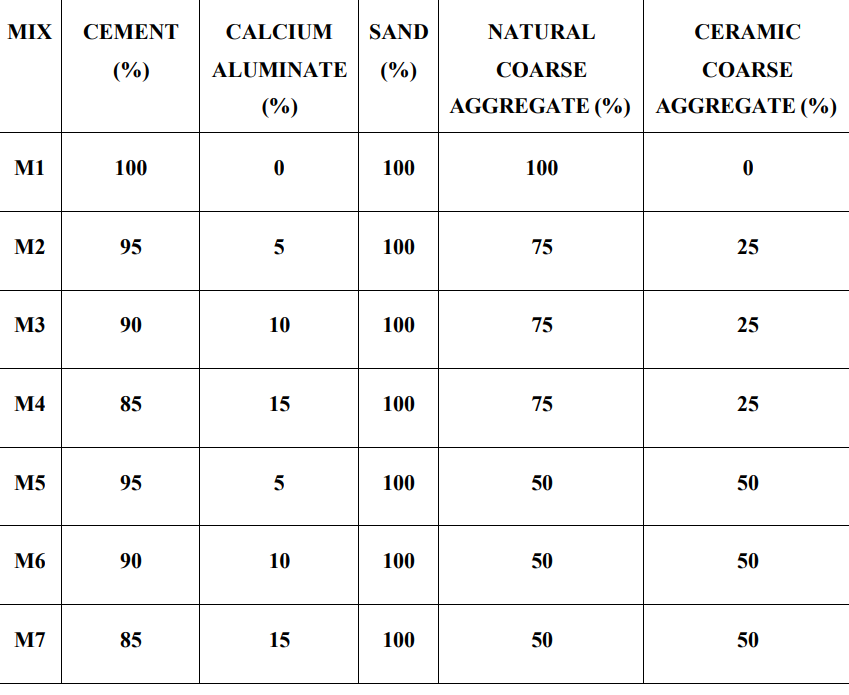
Table3.1 Material Percentages
A. Compressive Test
A compression test is a mechanical test that measures the maximum amount of compressive load a material can bear before fracturing. The test piece is compressed between the platens of a compression-testing machine by a gradually applied load. Compression testing is a fundamental mechanical test, similar in nature to tensile and bend tests. Compression testing is used to establish the compressive force or crush resistance of a material and the ability of the material to recover after a specified compressive force is applied and even held over a defined period of time.
The formula for calculating the compressive strength of a material is: CS = F ÷ A, where CS is the compressive strength, F is the force or load at point of failure, and A is the initial crosssectional surface area.

Figure3. 1 Compression-testing machine
B. Tensile Strength Test
Tensile testing is a fundamental materials science and engineering test in which a sample is subjected to a controlled tension until failure 1 . The test is used to determine the mechanical properties of materials such as ultimate tensile strength, breaking strength, maximum elongation, reduction in area, Young’s modulus, Poisson’s ratio, and strain-hardening characteristics. The test is commonly used for obtaining the mechanical characteristics of isotropic materials. The preparation of test specimens depends on the purposes of testing and on the governing test method or specification. A tensile specimen usually has a standardized sample cross-section. It has two shoulders and a gauge (section) in between. The shoulders and grip section are generally larger than the gauge section by 33% so they can be easily gripped. The gauge section’s smaller diameter also allows the deformation and failure to occur in this area
The formula for calculating tensile strength is: TS = UF / A where TS is the tensile strength, UF is the ultimate force, and A is the cross-sectional area the force is acting on.

Figure3. 2 Tensile specimen
C. Flexural Test
The flexural test is a mechanical test that measures the force required to bend a material under three-point loading conditions. The test is used to determine the flexural strength, flexural modulus, and flexural strain of a material. The test is commonly performed on relatively flexible materials such as polymers, wood, and composites. The test is conducted using a universal testing machine with a three-point or four-point bend fixture. The sample is placed on two supporting pins a set distance apart. The load is applied at the centre of the specimen by a loading nose. The load is increased until the specimen fractures or yields. The flexural strength represents the highest stress experienced within the material at its moment of yield. The formula for calculating flexural strength is: FS = 3FL / 2bh^2 where FS is the flexural strength, F is the maximum load applied, L is the span length between the supports, b is the width of the specimen, and h is the height of the specimen.

Figure3. 3 Flexural test machine
IV. RESULTS
A. Compressive Strength Test
The examination outcome of the test related to the application of the compressive forces over the concrete showed that the maximum forte was gotten at 15 % practice of the calcium aluminate cement and the 25% practice of the ceramic waste aggregate when practiced in place of the normal cement and the normal aggregate correspondingly. The examination outcomes also conveyed that the most negative results are attained at lower proportion for both the materials. The compressive forces are easily handled by the concrete made with the ceramic waste and the calcium aluminate adhesive.
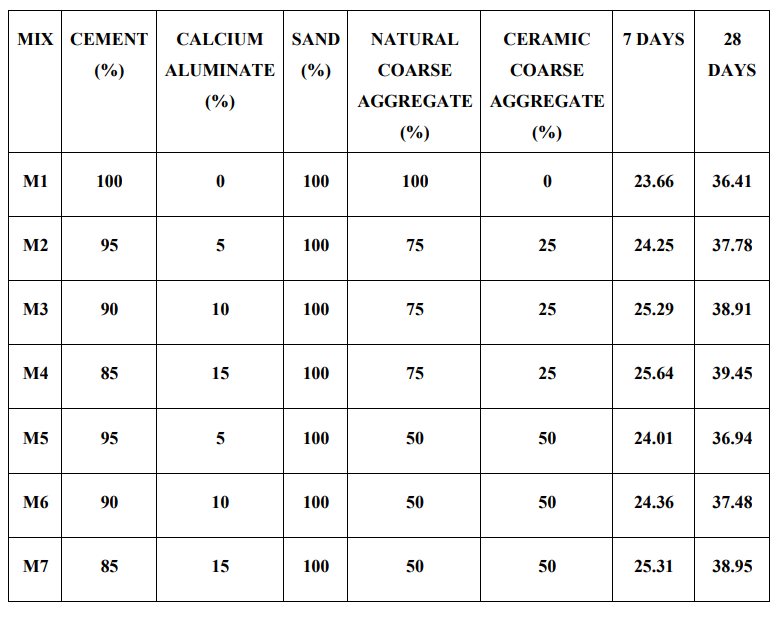
Table4. 1 Compressive Strength Test for 7 and 28 Days
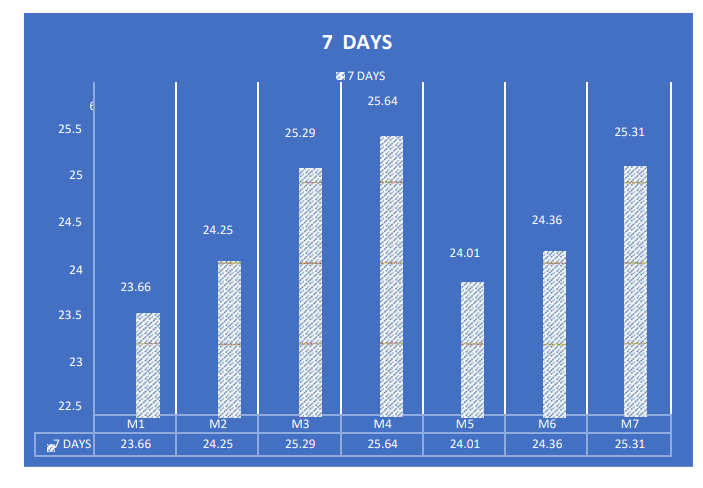
Figure4. 1Compressive Strength for 7 days
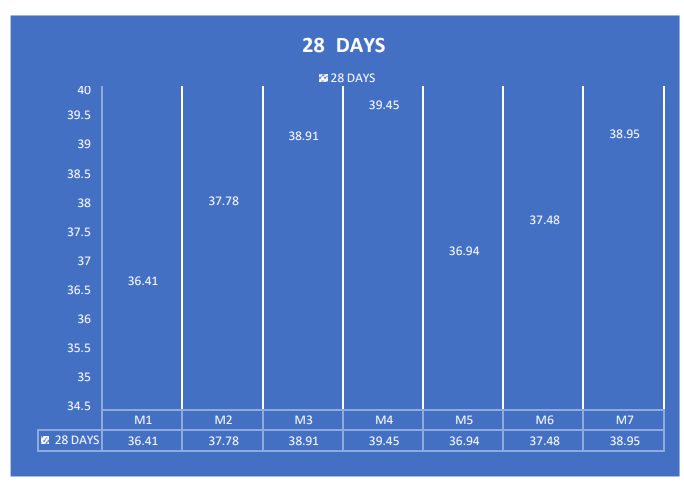
Figure4. 1.1 Compressive Strength for 28 days
B. Flexural Strength Test
The examination outcome of the test connected to the application of the flexural forces over the concrete showed that the maximum forte was gotten at 15 % practice of the calcium aluminate adhesive and the 25% practice of the ceramic waste aggregate when practiced in place of the normal cement and the normal aggregate correspondingly. The examination outcomes also conveyed that the most negative results were attained at lower proportion for both the materials. The flexural forces were easily handled by the concrete made with the ceramic waste and the calcium aluminate adhesive.
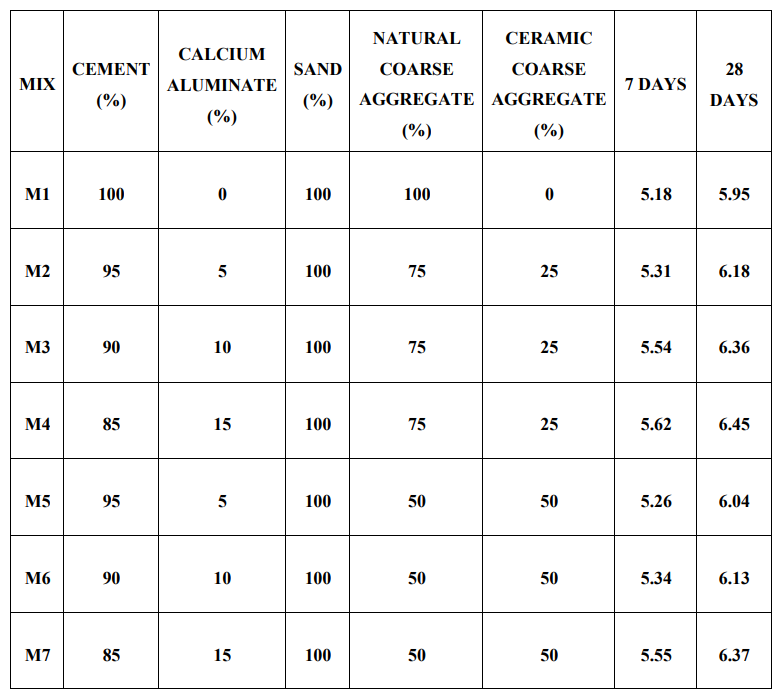
Table 4. 2 Flexural Strength Test for 7 and 28 Days
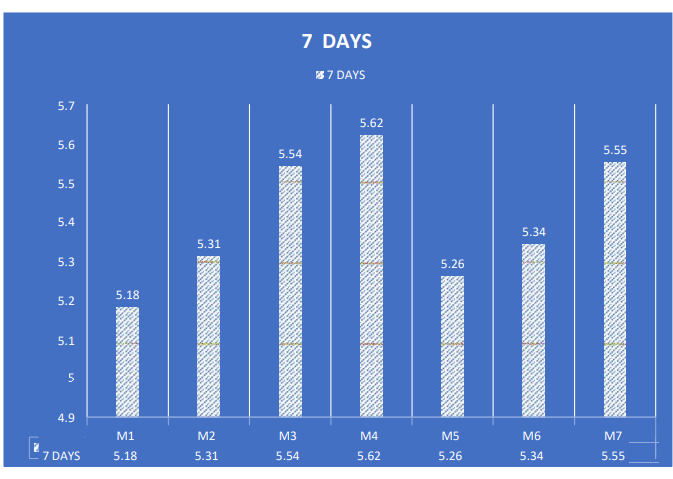
Figure4. 2 Flexural Strength for 7 days
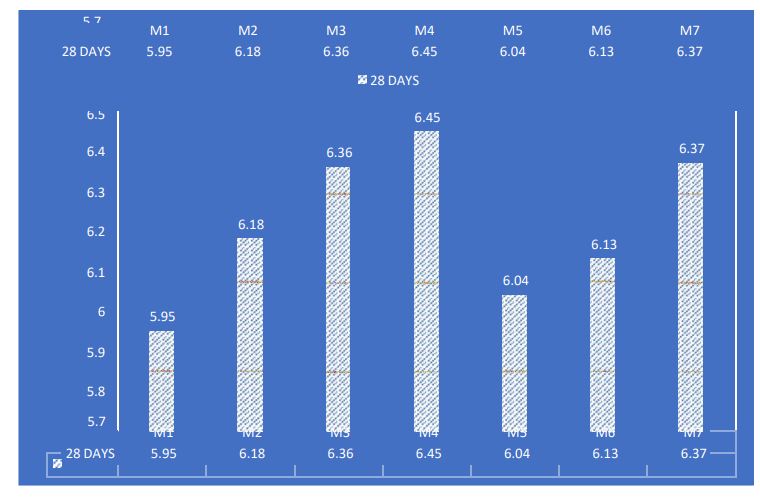
Figure4. 2.1 Flexural Strength for 28 days
C. Tensile Strength
TEST The examination outcome of the test related to the application of the tensile forces over the concrete showed that the maximum forte was gotten at 15 % practice of the calcium aluminate adhesive and the 25% practice of the ceramic waste aggregate when practiced in place of the normal cement and the normal aggregate correspondingly. The examination outcomes also conveyed that the most negative results were attained at lower proportion for both the materials. The tensile forces were easily handled by the concrete made with the ceramic waste and the calcium aluminate adhesive.

Table4.3 Tensile Strength Test for 7 and 28 Days
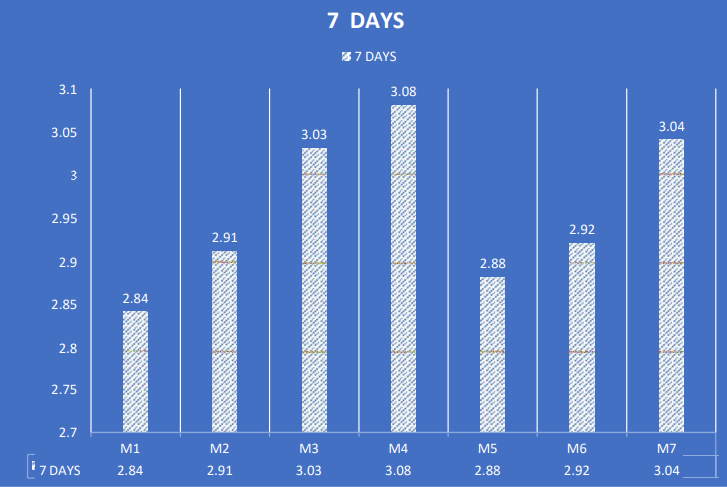
Figure4. 3 Tensile Strength for 7 days
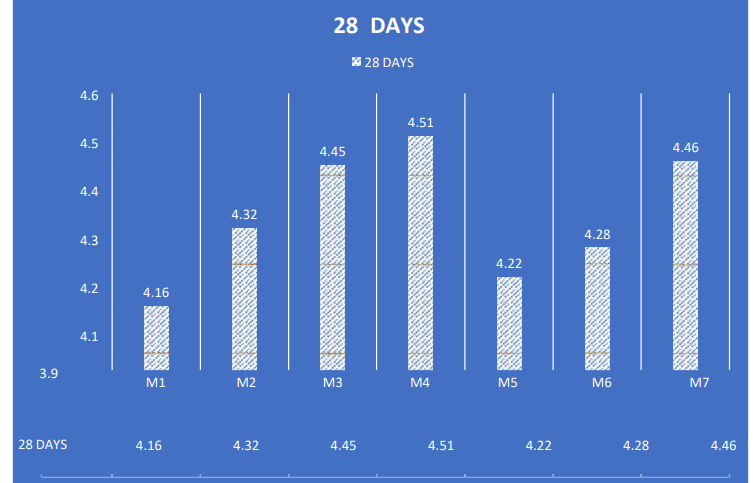
Figure4.3.1 Tensile Strength for 28 days
D. Water Absorption Test
The examination related to the checking of the total liquid attained by the concrete conveyed that the with the upsurge in the proportion of the calcium aluminate adhesive with respect to the ordinary adhesive and with the upsurge in the proportion of the ceramic left-over aggregate with respect to the ordinary aggregate, the liquid attaining capacity of the concrete made with these materials was rising and the maximum absorption was attained at higher proportion for both the materials that is at 15 % of calcium aluminate adhesive and at 50 % of ceramic aggregate.

Table4. 4 Water Absorption Test 28 Days
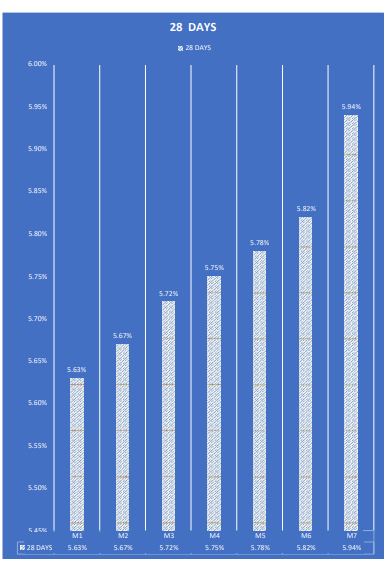
Figure 4. 4 Water Absorption for 28days
E. UPV Test
The examination outcome of the test related to the checking of the passage of ultrasonic pulse from the concrete showed that the maximum forte was gotten at 15 % practice of the calcium aluminate adhesive and the 25% practice of the ceramic waste aggregate when practiced in place of the normal cement and the normal aggregate correspondingly. The examination outcomes also conveyed that the most negative results were attained at lower proportion for both the materials. The ultra-sonic pulse was easily handled by the concrete made with the ceramic waste and the calcium aluminate adhesive
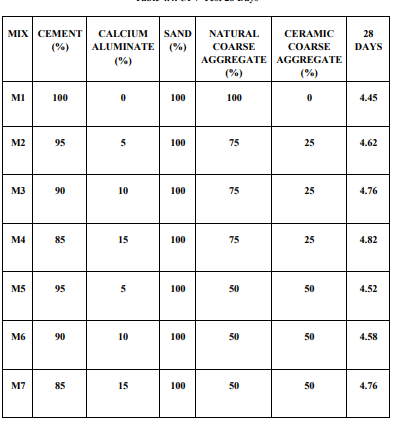
Table4. 5 UPV Test 28 Days
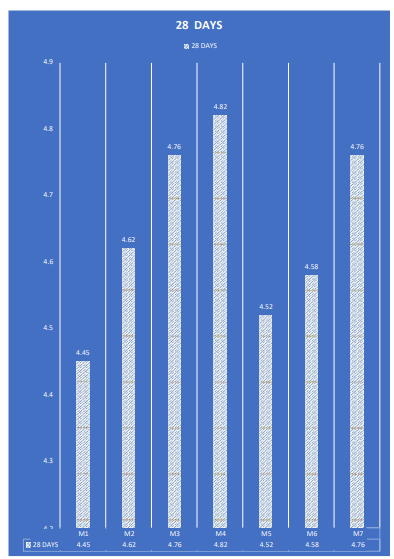
Figure4. 5. UPV for 28 days
F. Rebound Hammer Test
The examination outcome of the test related to the application of the compressive forces over the concrete showed that the maximum forte was gotten at 15 % practice of the calcium aluminate adhesive and the 25% practice of the ceramic waste aggregate when practiced in place of the normal cement and the normal aggregate correspondingly. The examination outcomes also conveyed that the most negative results were attained at lower proportion for both the materials. The compressive forces were easily handled by the concrete made with the ceramic waste and the calcium aluminate adhesive

Figure4. 6 Rebound Hammer Test 28 Days
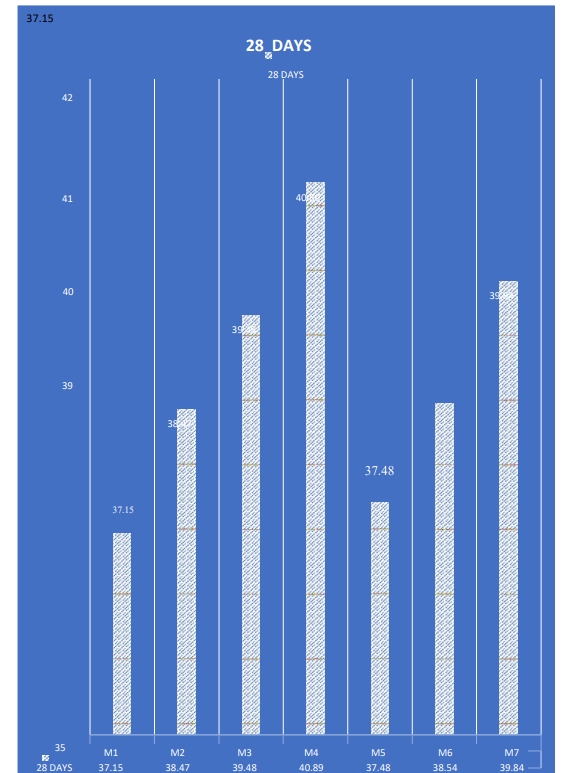
Figure4. 6 Rebound Hammer Test for 28 days
Conclusion
1) The test results concluded that the maximum strength related to the compressive forces was attained at 15 % application of the calcium aluminate-based cement and 25 % application of the ceramic based aggregate when used in mixture with one another. 2) This type of results was attained due to the numerous substantial aspects of both the materials. The combination of both the material that the calcium aluminate-based cement and the ceramic waste aggregate is very much effective from the strength point of concern and heals the concrete in an effective manner. 3) The test results concluded that the supreme strength related to the tension forces and the bending forces was attained at 15 % application of the calcium aluminate-based cement and 25 % application of the ceramic based aggregate when used in mixture with one another. 4) In both the cases of tension forces and the bending forces both the material heals the core microstructure of the tangible and prime to the extreme rise in the strength parameters related to the tension forces and the bending forces. 5) The outcomes of the other examination such as hammer test, UPV test and the liquid retaining test were similar and the progressive results were attained at 15 % practice of the calcium aluminate-based cement and at 25 % usage of the ceramic waste aggregate
Copyright
Copyright © 2024 Gulnaz Akthar, Ashish Kumar. This is an open access article distributed under the Creative Commons Attribution License, which permits unrestricted use, distribution, and reproduction in any medium, provided the original work is properly cited.

Download Paper
Paper Id : IJRASET64161
Publish Date : 2024-09-05
ISSN : 2321-9653
Publisher Name : IJRASET
DOI Link : Click Here
 Submit Paper Online
Submit Paper Online

